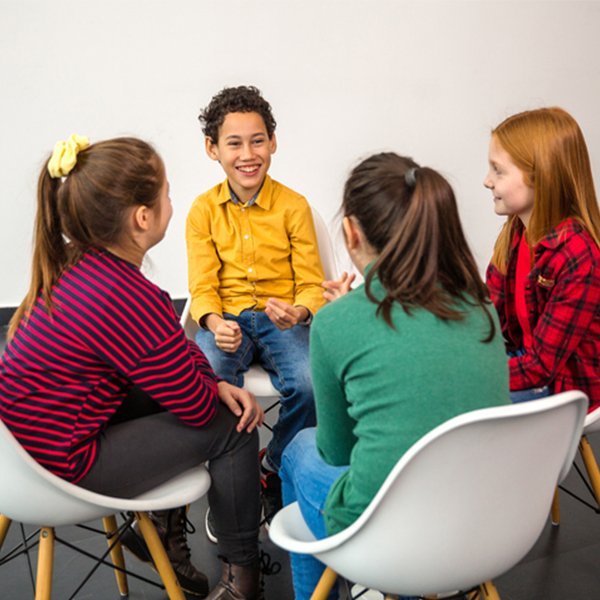Compass Sharing

Four children facing each other (momcilog, Getty Images)

Four children facing each other (momcilog, Getty Images)
Format
How does this align with my curriculum?
PE
5
Integrated Curriculum Grade 5: Science (Draft 2023)
IS 1.4: Collaborating with others effectively can help us to share meaningful explorations in impactful ways.
PE
6
Integrated Curriculum Grade 6: Science (Draft 2023)
IS 1.4: Collaborating with others effectively can help us to share meaningful explorations in impactful ways.
PE
6
Integrated Curriculum Grade 6: Science (Draft 2023)
IS 1.4: Effectively communicate the results of their inquiry.
This strategy helps students engage in small group sharing and ensures equal opportunity for voice through its structured process.
Why use it?
- To enhance collaborative learning
- To foster critical thinking and reflection.
- To consider different perspectives on a topic.
- To promote inclusive and supportive learning opportunities.
Tips for success
- Name the direction of the person to start (e.g., the person whose back is facing north) so you are able to see each group’s progress with sharing at a glance.
- Provide a guideline for how long groups will have to share their thinking about the prompt in their small group (e.g., 10 min). This time will serve as a guide for individual sharing (e.g., 2 minutes per person and then 2 min for cross-talk).
How do I use it?
- In groups of four, learners place their chairs facing inward to form a square, with chairs at north, east, south, and west positions.
- Provide a guiding question or prompt as the focus of the discussion.
- Sitting knee to knee, the person in the north position begins sharing for a set amount of time.
- Each speaker shares without interruption in a clockwise order.
- After every person is done sharing, group members can engage in cross-talk, including questions, answers, and comments.
- Small groups can discuss one prompt or a series of prompts in separate rounds.
Variations
- This strategy can work with 3 participants if needed.
- This could also be done by students sitting around a square table or sitting on the floor or ground.